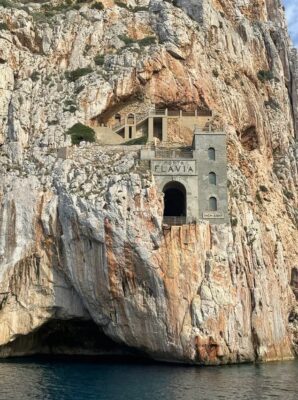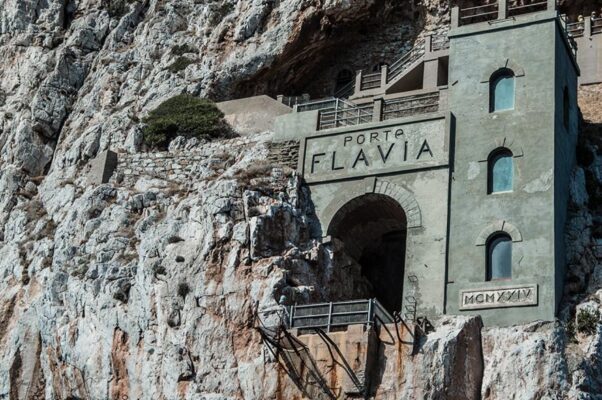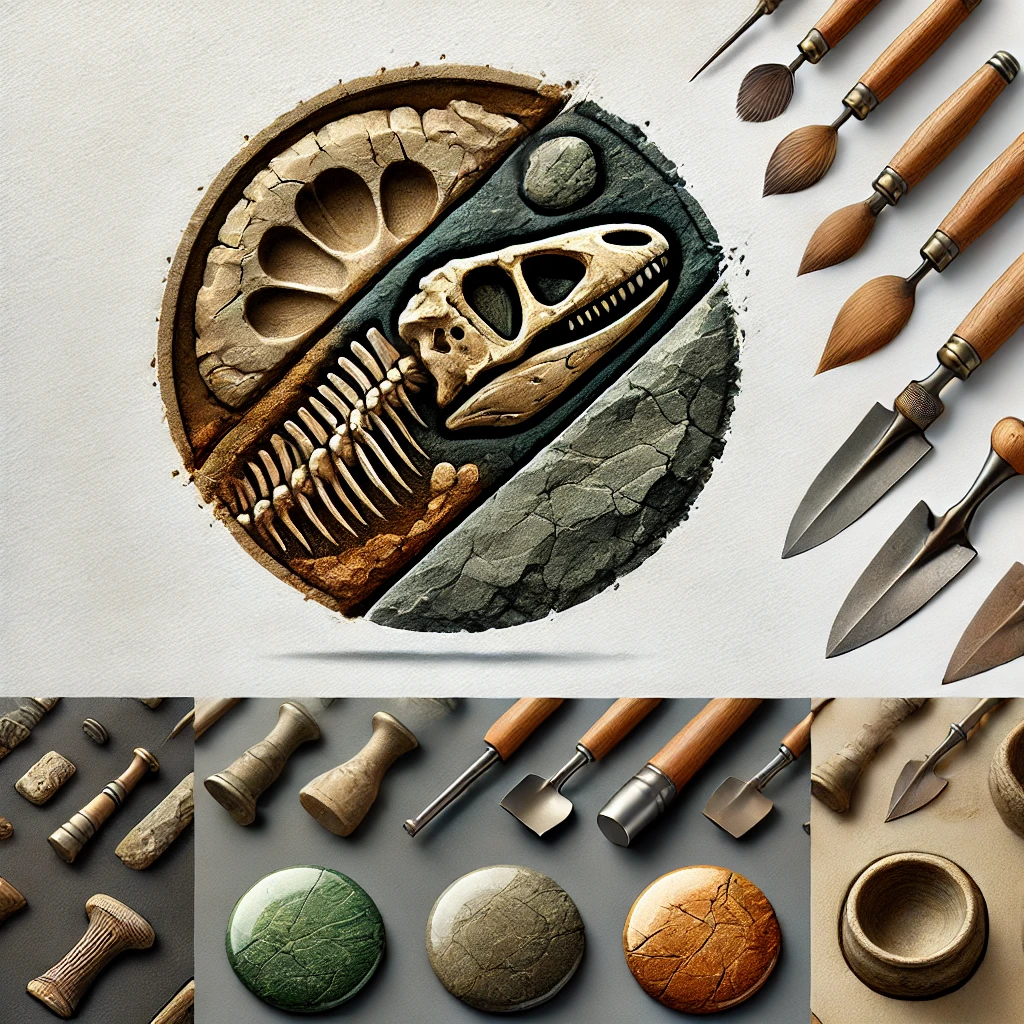The Abandoned Porto Flavia is a fascinating abandoned sea harbor located near Nebida, in the Iglesias municipality of southern Sardinia, Italy. Built between 1923 and 1924, it once served as the central hub for mineral production in Masua, located on the western coast of the Iglesiente area in Sardinia. Today, Porto Flavia stands as a forgotten monument, offering a unique glimpse into Sardinia’s industrial history.

1. The History The Abandoned “Porto Flavia”
1.1 The Birth of Porto Flavia
Porto Flavia was constructed between 1923 and 1924, and was named after the daughter of the mining company director, Flavia. The harbor was built to facilitate the export of minerals from the nearby Masua mines, a region rich in natural resources along Sardinia’s west coast.
See more: The Mammoth Bone Huts of Mezhyrich: A Prehistoric Marvel
1.2 Masua’s Mineral Extraction Hub
Masua was a key area for the mining industry in Sardinia, providing valuable minerals for Porto Flavia’s export activities. The harbor played a crucial role in connecting the mines to international markets, driving the economic growth of the region during its operational years.
1.3 Porto Flavia’s Peak of Activity
During its peak, Porto Flavia was a vital part of Sardinia’s mining industry, serving as the primary port for exporting minerals. The harbor was not only an important industrial site but also a marvel of engineering at the time, representing the advanced technological capabilities of the early 20th century.

2. Unique Architectural Features of Porto Flavia
2.1 Impressive Construction Techniques
Porto Flavia was built directly into the cliffside, showcasing extraordinary construction techniques that involved creating tunnels and chambers in the rock to connect the mines to the harbor. This method of construction remains a rare feat among sea ports worldwide.
2.2 The Unique Mineral Transport System
One of the standout features of Porto Flavia was its long conveyor system, used to transport minerals from the mines directly onto ships. This innovative transportation system greatly improved the efficiency of mineral exports, making Porto Flavia an engineering marvel of its time.
2.3 Mine Tunnels and Associated Structures
The extensive system of mine tunnels that connected to Porto Flavia was a critical component in the mineral extraction process. These tunnels and the related infrastructure were integral to the mining operations and are a testament to the ingenuity and resourcefulness of the workers who built them.

3. Porto Flavia Today: A Forgotten Industrial Monument
3.1 The Abandonment of Porto Flavia
Today, Porto Flavia is abandoned and no longer serves as a functioning harbor. Despite its current state of disrepair, it remains a captivating site for visitors interested in Sardinia’s industrial past. The decay of Porto Flavia evokes memories of the thriving industrial era it once supported.
3.2 Porto Flavia’s Industrial Legacy
Although abandoned, Porto Flavia remains an important part of Sardinia’s industrial heritage. It not only represents an engineering marvel of its time but also reflects the prosperity of Sardinia’s mining industry during the early 20th century.
3.3 Tourism and Exploration at Porto Flavia
While Porto Flavia may no longer be an active port, it continues to attract tourists. Visitors come to admire the stunning views and explore the rich history behind the site. Guided tours offer insights into Porto Flavia’s past and its role in the industrial development of Sardinia.

Conclusion
Porto Flavia is not just an ancient industrial structure; it is a symbol of the creativity and engineering ingenuity of its time. Although abandoned, Porto Flavia remains an important piece of Sardinia’s industrial legacy, serving as a fascinating destination for history lovers and explorers seeking to uncover the past of this remarkable island.


CÁC TIN KHÁC
Mark Twain & Olivia Langdon: A 36-Year Love Story Filled with Laughter and Devotion
The Tollund Man: A 2,400-Year-Old Mystery Preserved in a Danish Bog
Skara Brae: Scotland’s Hidden Neolithic Village
Porta Nigra: The Hidden Depths of Trier’s Iconic Roman Gate